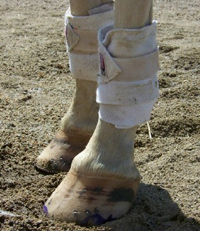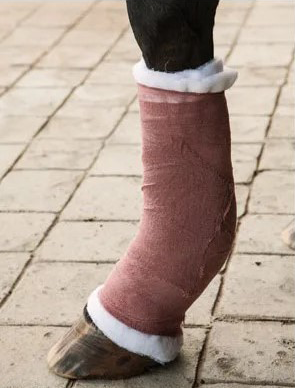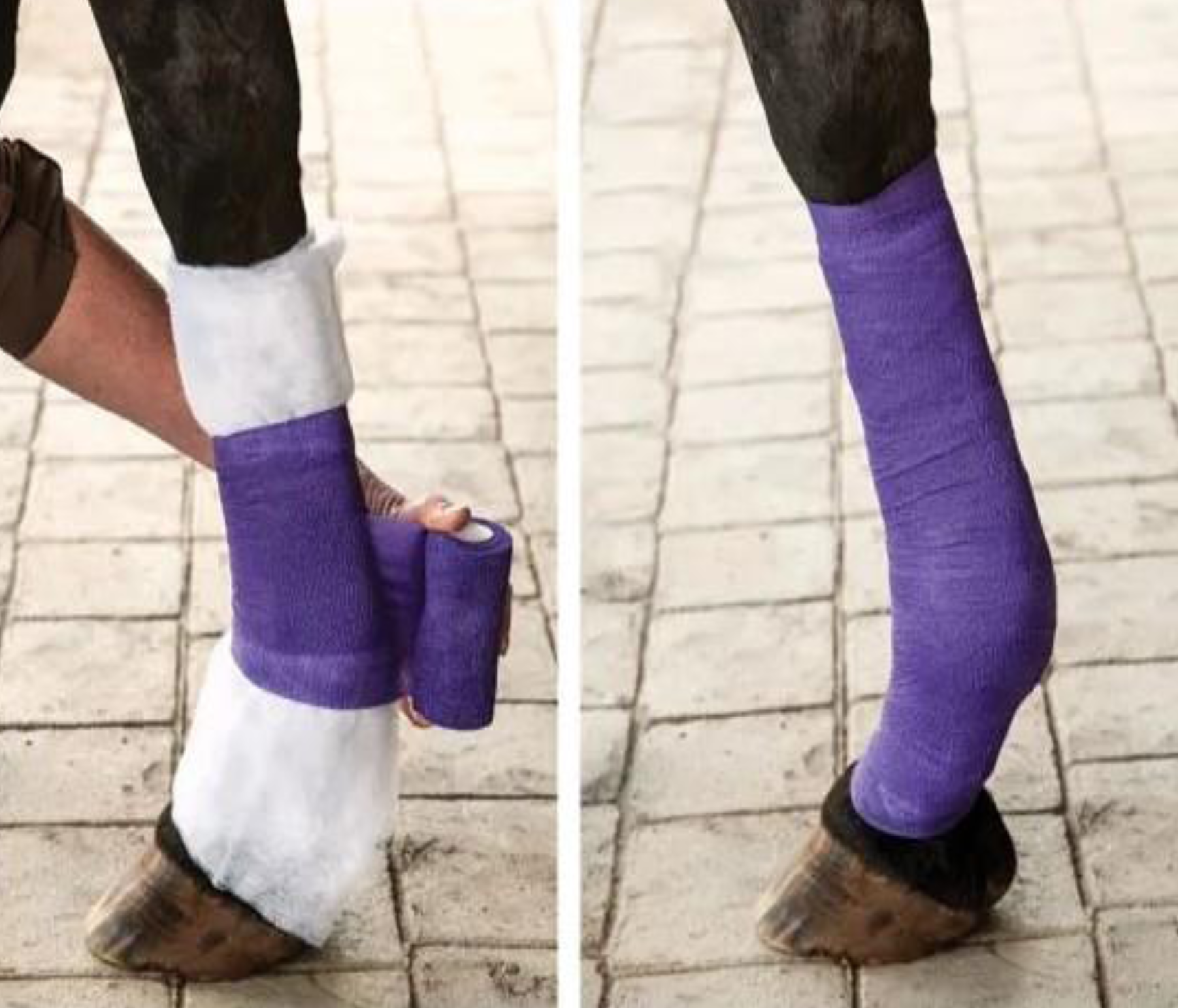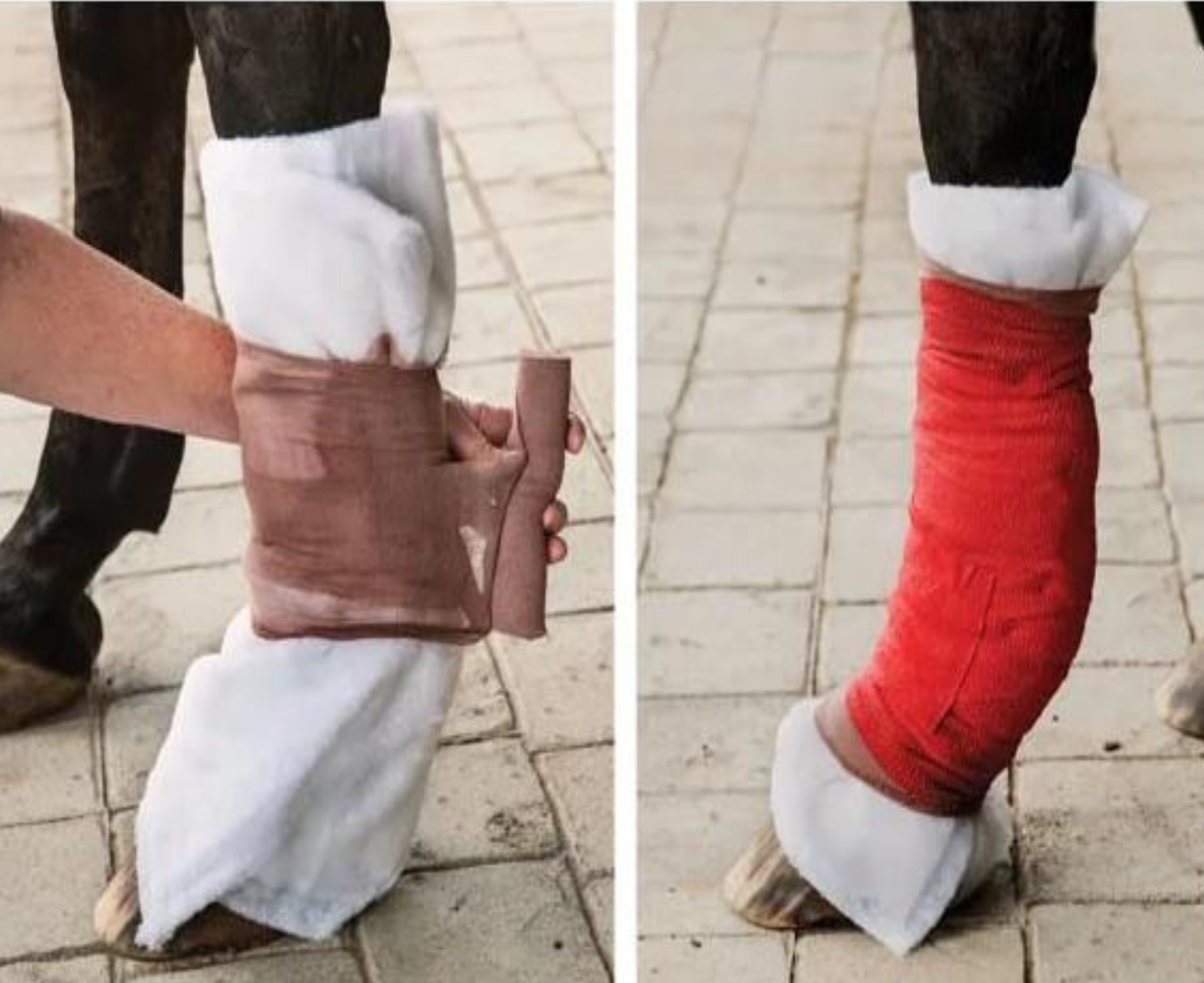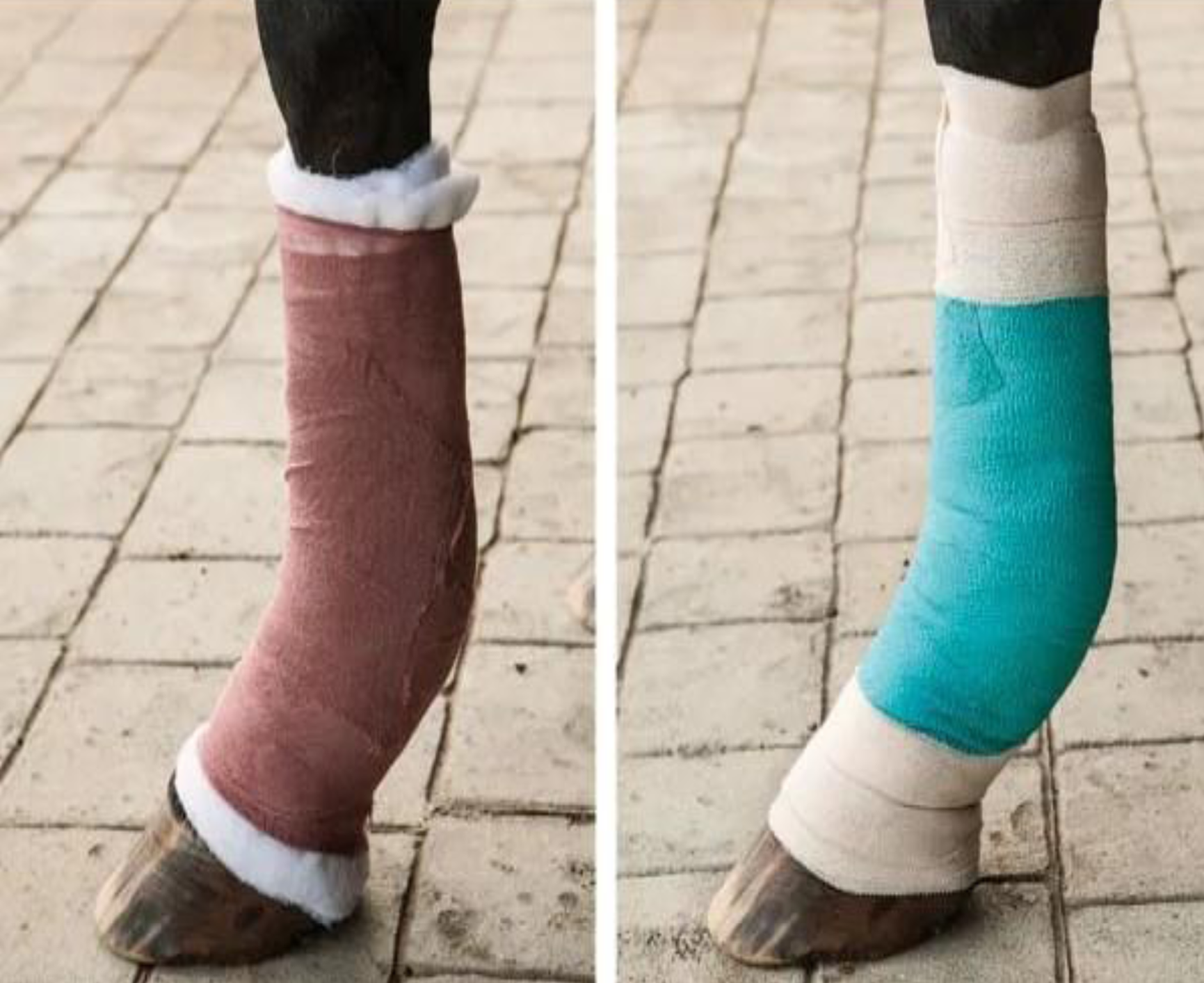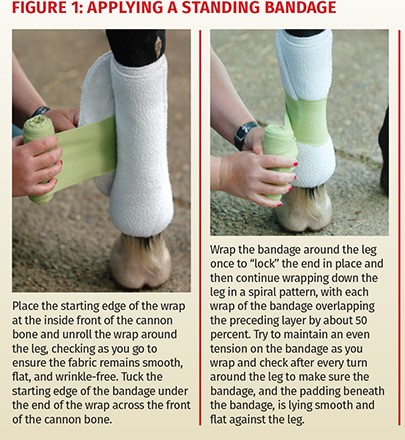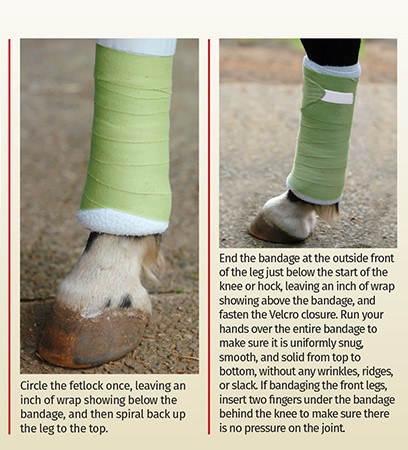Horse leg wraps used for the protection of the lower legs of horses during training, shipping, and exercise, as well as for therapeutic and medical purposes to support tendons and ligaments, to cover wounds.
There are 2 primary types of legs wraps for horses, and they each have a particular use.
- Polo wraps: These wraps are typically worn for support during competitions and exercise.
- Standing wraps/Stable wraps: These wraps are used to treat swelling, give support to tendons, treat wounds, and apply pressure.
Wrapping a horse’s legs incorrectly can seriously harm your horse.
Polo Wraps
What’s wrong?
- Polo wraps are completely in the wrong place. They are uneven and far too small. It should be spread evenly up and down the entire length of the cannon bone.
- Polos must be applied tight enough to stay up but not tight enough to compromise blood supply. Incorrect application can damage the tendons.
- Polo wraps only stay on the leg as well as they are put on; if wrapped too loosely or the Velcro is weak, you may be creating a potentially dangerous situation.
- Polo wrap should be washed often since a dirty polo wrap can also damage a horse’s legs.
- Polos are not suitable for use in potentially wet conditions (such as cross-country riding or riding through puddles), as they absorb water and become very heavy and sag.
- Polo Wraps should not be used during trail riding and not recommended for use when putting the horse in a stall for a while.
Standing Bandages
- A stable bandage, or standing bandage/wrap, is wrapped around the horse’s legs using polo wraps.
- The main function of standing bandages is to provide protection, mild support, and warmth to the tendons and ligaments, to help stimulate blood flow.
- Also used to help prevent edema, to cover the leg after applying a wound dressing, liniment, or other topical.
- An incorrectly applied stable bandages might not only fail to do their job, but they can cause discomfort, restrict blood flow and potentially damage tendons and other tissue.
Here’s how it’s done. Several (2 or 3) layers of cotton, wrapped smoothly around the leg, provide plenty of padding to protect the underlying tissues from pressure damage.
General Principles when Applying a Bandage:
- Wrap each layer in the same direction and overlap each layer by about one third to half width each round. This gives the bandage more stability.
- Always follow the normal structures of the limb, and make sure the thickness of your bandage does not vary.
- Never finish a bandage midway between joints, as this may cause pressure on the underlying tissues.
- Make sure your horse doesn’t move around too much when the bandage is on, because it can slip and cause pressure.
- A slipping bandage disrupts the cells trying to heal across the wound.
Stay safe and happy wrapping!





